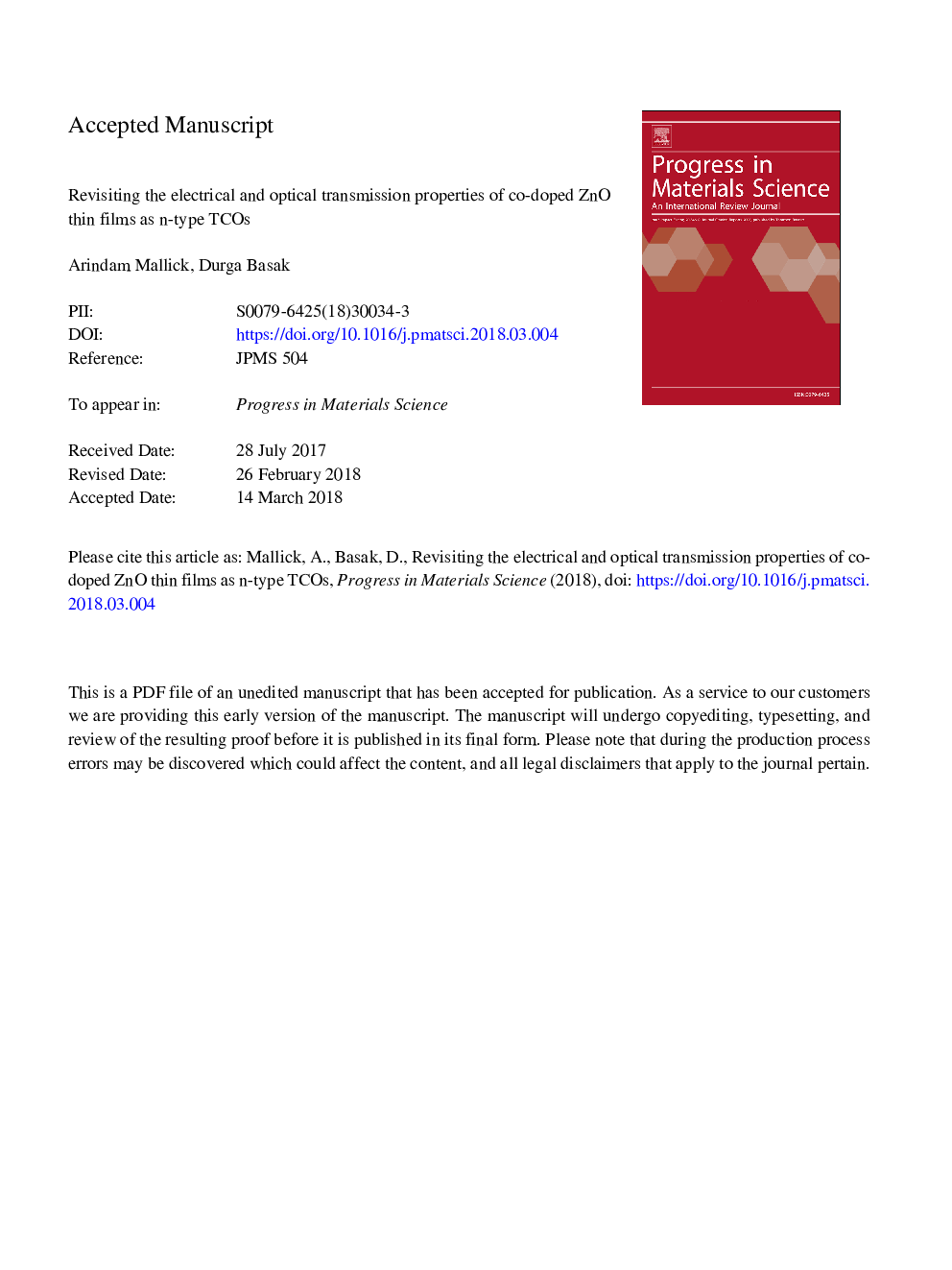| Article ID | Journal | Published Year | Pages | File Type |
|---|---|---|---|---|
| 8022999 | Progress in Materials Science | 2018 | 80 Pages |
Abstract
A transparent conducting oxide (TCO) thin film exhibits a very high electrical conductivity and high visible light transparency with considerable practical applications in solar cells and in transparent electronics. As a promising substitute to Sn-doped In2O3 (ITO), doped ZnO thin films are widely considered due to low-cost, non-toxicity and high durability against the H plasma compared with ITO. In this review, by 'co-doping', we mean cation-cation (two iso-valent or heterovalent cations) and cation-anion (one higher valence cation and one lower valence anion) double doping in ZnO film. This article commences with a generalized description of TCOs, ITO and single-doped ZnO followed by a discussion on co-doped ZnO. We systemically present the current progress in both co-doping studies with critically summarized results to gain an overview, especially regarding the electrical properties. The cation-cation co-doping results in a wide range of carrier concentrations and resistivity values due to the competitive Zn site substitution by two different cations simultaneously. Cation-anion co-doping leads to an expected change in the carrier concentration and resistivity values with a higher mobility in general due to fewer lattice defects. Finally, the article concludes with a brief discussion on problems and challenges to be addressed in the near future.
Keywords
OLEDFPDFWHMTCOSNIBRORTPNIRInIPLDVSNAesUltravioletLCDTransparent conducting oxideIndium tin oxidefluorine tin oxideOxygen interstitialITOconduction bandBoltzmann constantMobilityoxygen vacancyZinc vacancyDirect CurrentFTOTemperatureCo-doped ZnOLight emitting diodeOrganic light emitting diodeLEDRapid thermal processVINOptical transparencyFlat panel displayliquid crystal displayAuger electron spectroscopyfull width at half maximumdefectsCarrier concentrationPhotovoltaicRadio frequencyPulsed laser depositionNear infraredResistivityelectron voltX-ray diffractionXRDvalence band
Related Topics
Physical Sciences and Engineering
Materials Science
Nanotechnology
Authors
Arindam Mallick, Durga Basak,
